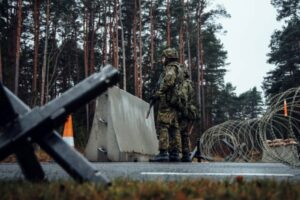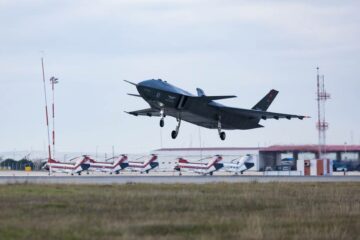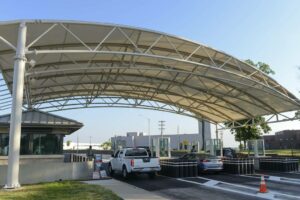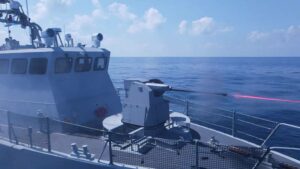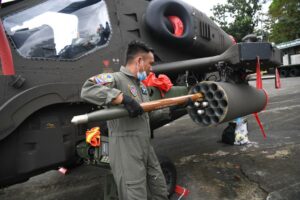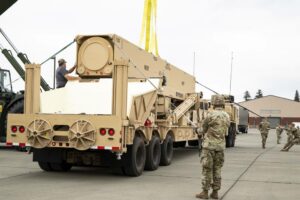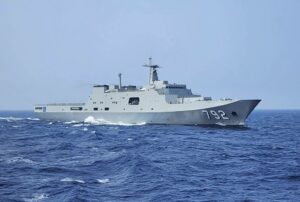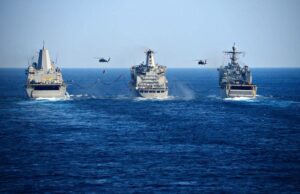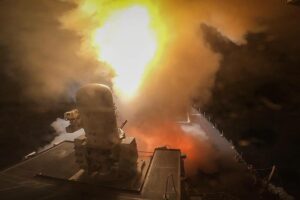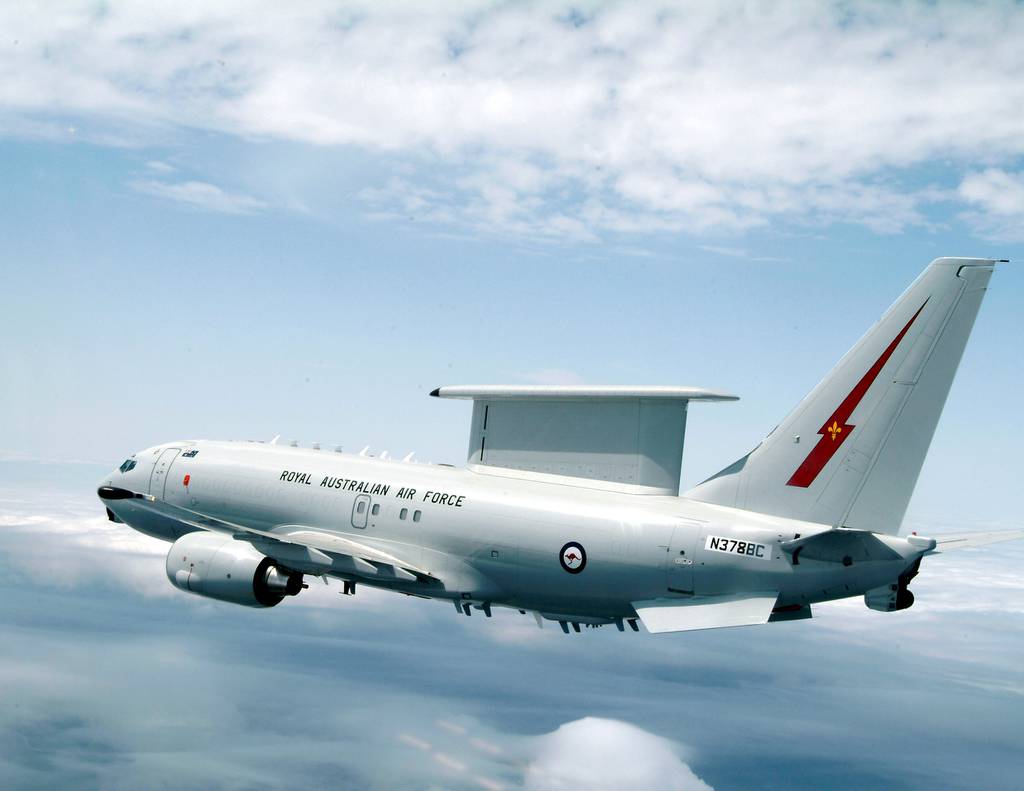
DAYTON, Ohio — With pressure on the U.S. Air Force to field its upcoming fleet of E-7A battlefield management aircraft as quickly as possible, the service is leaning heavily on advance procurement.
The Air Force wants to have a fleet of up to 26 of the Boeing-made command-and-control aircraft by 2032 to replace the aging E-3 Sentry. The latter’s airborne warning and control capabilities are lagging, and the fleet is nearing the end of its life. The Air Force is now retiring half its fleet of 31, though some lawmakers last year expressed concern that could leave the service with a capability gap.
But the Air Force’s ambitions to swiftly replace the E-3 in time for a potential fight against China, perhaps later this decade, are running into the realities of production limitations.
In a discussion with reporters at the Air Force’s Life Cycle Industry Days event in Dayton, Ohio, the program executive officer for digital services, Steven Wert, outlined steps the Air Force is taking to accelerate advance production and delivery of crucial components for the E-7 in hopes of speeding up the timetable for completing the planes.
The Air Force is now focusing on how quickly it can build the first E-7, Wert said — but there are limitations. Boeing first has to build the airframe using a 737 tube manufactured by Spirit AeroSystems in Wichita, Kansas; beef up its structure to be able to support the massive multirole electronically scanned array, or MESA, radar; add its mission systems; and then test and certify its airworthiness.
The Air Force is working to accelerate the process of building subsequent E-7s, largely through funding for long-lead items. By purchasing critical components in advance and making them available before they’re actually needed, the Air Force wants to ensure production lines don’t slow down while manufacturers wait for parts to arrive.
Wert pointed to a July 26 service announcement that the Air Force will issue a sole-source award for an unspecified amount to Boeing so it can buy more long-lead items for the low-rate initial production of the E-7, which is expected to begin in fiscal 2025.
Wert said Monday this advance procurement will cover multiple key areas, including the E-7′s airframe, its conversion and structural strengthening, and the MESA radar, which is nicknamed “top hat” for its distinctive shape.
The Air Force’s list of unfunded priorities for the FY24 budget asks for another $596 million for E-7 advance procurement funds.
Boeing said earlier this year that once the Air Force’s E-7 program is fully up and running, it plans to build at least four annually.
Wert said the production of the massive Northrop Grumman-made MESA radar is one of the limiting factors on E-7 production. The company can now build two radars per year, and is looking to expand that production capability to four.
The Air Force is also working with Boeing to find ways to keep the E-7′s cost down, Wert said, by ensuring its software architecture is modular and easily supportable, for example. The Air Force has assigned some of its own software developers from Tinker Air Force Base, Oklahoma, to directly work with Boeing on the E-7′s software, he added.
Above all, he explained, the Air Force doesn’t want the E-7 to repeat its experience with the Boeing-made E-3 Sentry program, where the service had to go back to the original manufacturer for any changes.
Other countries have shown interest in buying E-7s, increasing the pressure on Northrop to produce more radars, Wert noted. Northrop is already investing in ways to double its radar production capacity, he said, and the company could find ways to go even further.
“We may very well be very busy,” Wert said.
Stephen Losey is the air warfare reporter for Defense News. He previously covered leadership and personnel issues at Air Force Times, and the Pentagon, special operations and air warfare at Military.com. He has traveled to the Middle East to cover U.S. Air Force operations.
- SEO Powered Content & PR Distribution. Get Amplified Today.
- PlatoData.Network Vertical Generative Ai. Empower Yourself. Access Here.
- PlatoAiStream. Web3 Intelligence. Knowledge Amplified. Access Here.
- PlatoESG. Automotive / EVs, Carbon, CleanTech, Energy, Environment, Solar, Waste Management. Access Here.
- BlockOffsets. Modernizing Environmental Offset Ownership. Access Here.
- Source: https://www.defensenews.com/air/2023/08/03/us-air-force-eyes-advance-procurement-to-more-quickly-make-e-7-planes/
- :has
- :is
- :where
- $UP
- 10
- 2025
- 26
- 31
- 70
- a
- Able
- accelerate
- actually
- add
- added
- advance
- against
- Aging
- AIR
- Air Force
- aircraft
- All
- already
- also
- ambitions
- amount
- an
- and
- Announcement
- Annually
- Another
- any
- architecture
- ARE
- areas
- Array
- AS
- assigned
- At
- available
- award
- back
- base
- Battlefield
- BE
- Beef
- before
- begin
- Boeing
- budget
- build
- Building
- busy
- but
- buy
- Buying
- by
- CAN
- capabilities
- capability
- Capacity
- certify
- Changes
- China
- COM
- company
- completing
- components
- Concern
- control
- Conversion
- Cost
- could
- countries
- cover
- covered
- critical
- crucial
- cycle
- Days
- decade
- Defense
- delivery
- developers
- digital
- digital services
- directly
- discussion
- distinctive
- Doesn’t
- Dont
- double
- down
- Earlier
- easily
- East
- electronically
- end
- ensure
- ensuring
- Even
- Event
- example
- executive
- Executive Officer
- Expand
- expected
- experience
- explained
- expressed
- Eyes
- factors
- field
- fight
- Find
- First
- Fiscal
- FLEET
- focusing
- For
- Force
- four
- from
- fully
- funding
- funds
- further
- gap
- Go
- had
- Half
- Have
- he
- heavily
- hopes
- How
- HTTPS
- images
- in
- Including
- increasing
- industry
- initial
- interest
- into
- investing
- issue
- issues
- IT
- items
- ITS
- jpg
- July
- Kansas
- Keep
- Key
- Key Areas
- lagging
- largely
- Last
- Last Year
- later
- lawmakers
- Leadership
- least
- Leave
- Life
- limitations
- Limiting Factors
- lines
- List
- looking
- make
- Making
- management
- manufactured
- Manufacturer
- Manufacturers
- massive
- May..
- Middle
- Middle East
- Military
- million
- Mission
- modular
- Monday
- more
- multiple
- nearing
- needed
- news
- noted
- now
- of
- Officer
- Ohio
- Oklahoma
- on
- once
- ONE
- Operations
- or
- original
- outlined
- own
- parts
- pentagon
- per
- perhaps
- Personnel
- Planes
- plans
- plato
- Plato Data Intelligence
- PlatoData
- possible
- potential
- pressure
- previously
- process
- procurement
- produce
- Production
- Program
- purchasing
- quickly
- radar
- realities
- repeat
- replace
- reporter
- running
- s
- Said
- service
- Services
- Shape
- shown
- slow
- So
- Software
- Software Developers
- some
- special
- spirit
- Steps
- steven
- strengthening
- structural
- structure
- subsequent
- support
- swiftly
- Systems
- taking
- test
- that
- The
- Them
- then
- There.
- this
- this year
- though?
- Through
- time
- times
- timetable
- to
- traveled
- two
- u.s.
- U.S. Air Force
- upcoming
- us
- using
- very
- wait
- want
- wants
- warning
- ways
- WELL
- which
- while
- will
- with
- Work
- working
- year
- zephyrnet

